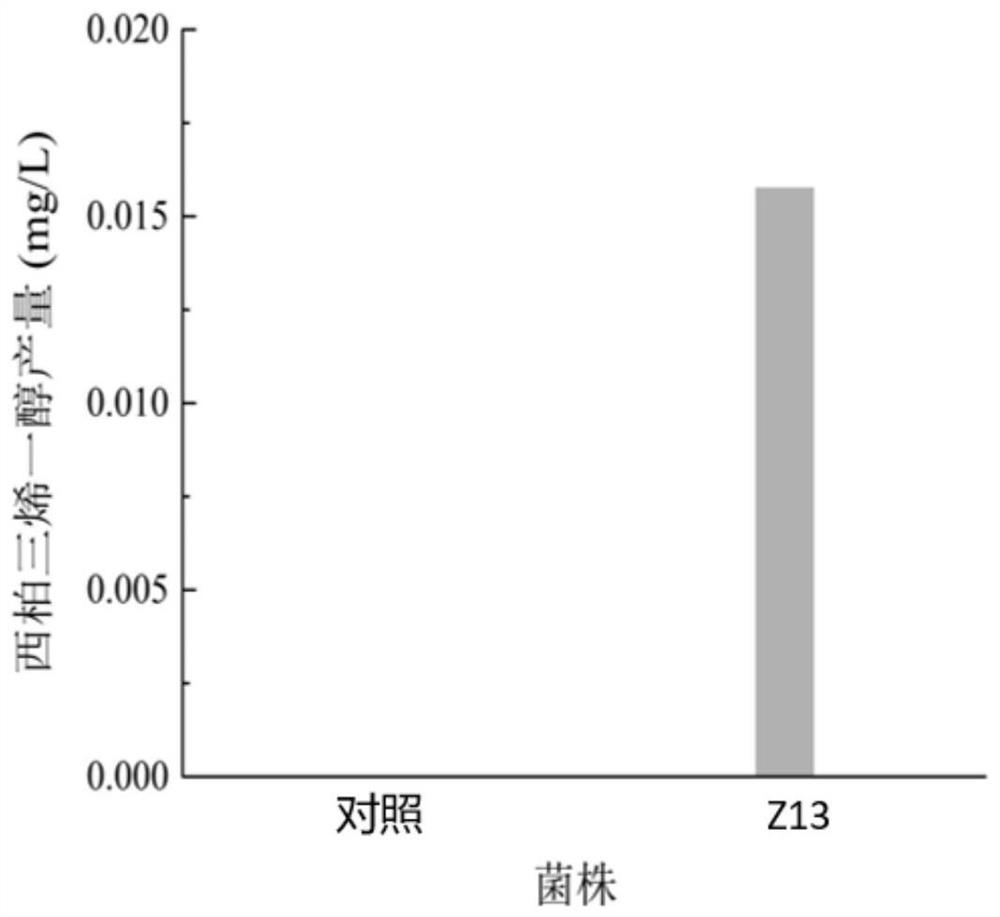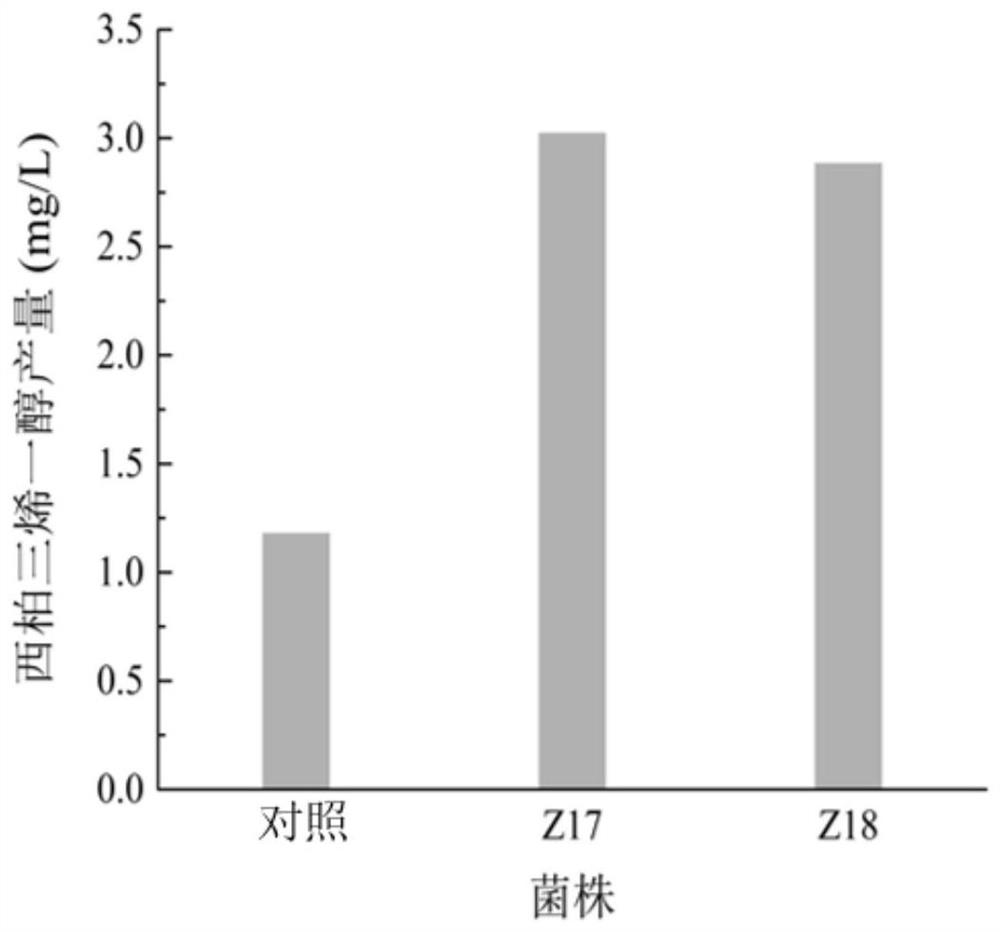Recombinant bacterium for producing Cembrenediol and application thereof
A technology of cerebrotrienol and cerebrotrienol, which is applied in the field of metabolic engineering to achieve the effect of efficient production and application promotion
- Summary
- Abstract
- Description
- Claims
- Application Information
AI Technical Summary
Problems solved by technology
Method used
Image
Examples
Embodiment 1
[0023] In this example, the GGPP synthetase gene (ggpps) was excised with NdeI and XhoI restriction endonucleases and connected to pETDuet to obtain the recombinant plasmid pETDuet-ggpps, and the two recombinant plasmids were transformed into E.coli JM109 to obtain the recombinant strain E. coli JM109 pETDuet-ggpps. Cultivate the recombinant strain E.coli JM109 pETDuet-ggpps, collect the cells, and extract the recombinant plasmid pETDuet-ggpps. The cembratrienol synthase gene cbts was digested with NcoI and EcoRI restriction enzymes, and pETDuet-ggpps was digested with NcoI and EcoRI restriction enzymes at the same time, and the cbts gene was connected to the recombinant plasmid pETDuet-ggpps to construct the recombinant Plasmid pETDuet-ggpps-cbts was transformed into E.coli BL21(DE3) to construct recombinant strain Z13. Put the constructed recombinant strain Z13 on the LB solid medium containing the corresponding antibiotics, and carry out three-section lines. After a single...
Embodiment 2
[0025] In this example, the 1-deoxy-D-xylulose-5-phosphate synthase gene dxs was digested with NdeI and XhoI restriction endonucleases and the pACYCDuet vector to construct the recombinant plasmid pACYCDuet-dxs, and transform the recombinant plasmid into E .coliJM109 was screened and verified to obtain the recombinant strain Z11. Cut the isoprene pyrophosphate isomerase gene (idi) with NcoI and EcoRI restriction enzymes, and treat pACYCDuet-dxs with the same restriction enzymes at the same time, and use DNA ligase to connect idi to pACYCDuet- dxs, the recombinant plasmid pACYCDuet-dxs-idi was obtained. The recombinant plasmid pACYCDuet-dxs-idi was transformed into the recombinant strain Z13 in Example 1, and the recombinant strain Z16 was obtained through screening verification. Z16 was induced to ferment for 2 days. After the fermentation, the cells were collected by centrifuging at 5000 rpm for 10 min. After extraction and reconstitution, adopt GC-MS to measure the output ...
Embodiment 3
[0027]In this example, the 1-deoxy-D-xylulose-5-phosphate synthase gene dxs was digested with NdeI and XhoI restriction endonucleases and the pCDFDuet vector to construct the recombinant plasmid pCDFDuet-dxs, and transform the recombinant plasmid into E .coliJM109 was screened and verified to obtain the recombinant strain Z11. Cut the isoprene pyrophosphate isomerase gene (idi) with NcoI and EcoRI restriction enzymes, and treat pCDFDuet-dxs with the same restriction enzymes at the same time, and use DNA ligase to connect idi to pCDFDuet- dxs, obtain the recombinant plasmid pCDFDuet-dxs-idi, transform the recombinant plasmid into the recombinant strain Z13 in Example 1, and obtain the recombinant strain Z17 through screening verification. The GGPP synthetase gene (ggpps) was excised with NdeI and XhoI restriction endonucleases and connected to pRSFDuet to obtain the recombinant plasmid pRSFDuet-ggpps, and the two recombinant plasmids were transformed into E.coli JM109 to obtain...
PUM
 Login to View More
Login to View More Abstract
Description
Claims
Application Information
 Login to View More
Login to View More - R&D
- Intellectual Property
- Life Sciences
- Materials
- Tech Scout
- Unparalleled Data Quality
- Higher Quality Content
- 60% Fewer Hallucinations
Browse by: Latest US Patents, China's latest patents, Technical Efficacy Thesaurus, Application Domain, Technology Topic, Popular Technical Reports.
© 2025 PatSnap. All rights reserved.Legal|Privacy policy|Modern Slavery Act Transparency Statement|Sitemap|About US| Contact US: help@patsnap.com



